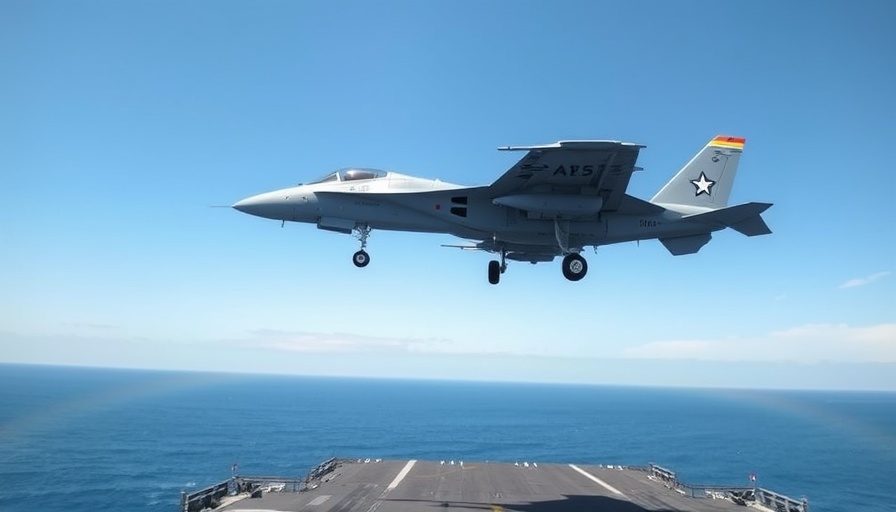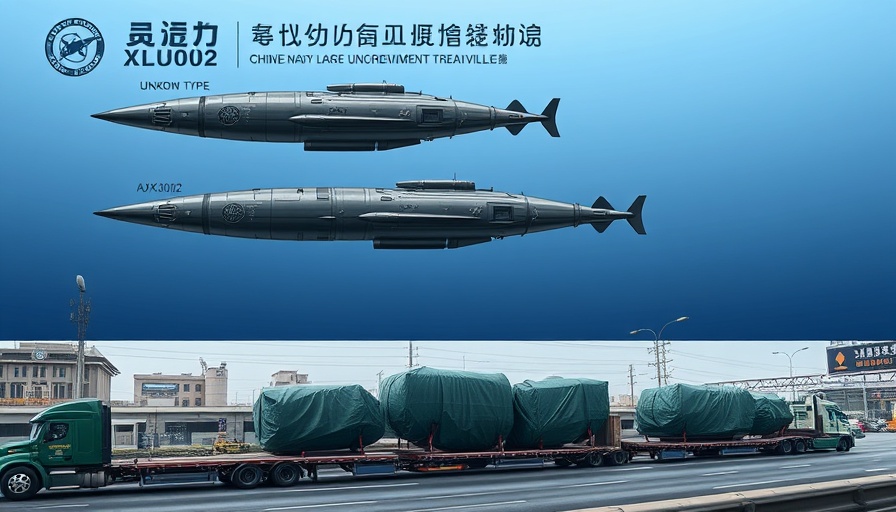
The Philippines Fortifies Its Maritime Defense Amid Rising Chinese Tensions
In light of escalating tensions in the South China Sea and recent concerns over potential Chinese espionage, the Philippines is significantly enhancing its maritime defense capabilities. Defense Secretary Gilberto Teodoro announced that the country plans to expedite the upgrade of naval bases, particularly on Balabac Island, a strategically vital location in the southern part of Palawan province. This initiative is critical as the Philippines seeks to reinforce its sovereignty against increasing threats from Chinese operations in contested waters.
A Strategic Basing Plan for Future Readiness
The Philippines intends to develop several naval bases as part of a broader Strategic Basing Plan set to be realized by 2040. This plan will see the modernization of existing infrastructure to accommodate new naval vessels and improve the operational readiness of the fleet. Rear Adm. Roy Vincent Trinidad highlights this approach, stating, "We want to look at other areas where we can base our ships.” The strategic upgrades aim to boost the presence of the Philippine Navy in key maritime corridors, increasing its efficiency in both defense and logistical capabilities.
Understanding the Threat of Chinese Surveillance
Balabac Island lies only 140 nautical miles from Mischief Reef, which is under Chinese control and is a focal point of contention. The Government's worries surrounding perceived Chinese espionage sleeper cells in the region has heightened the urgency for bolstered maritime security—one that aligns synergies with the U.S. military through a basing agreement. This ongoing partnership allows for U.S. troops to rotate in and out, enhancing mutual defense posture and allowing the Philippines to benefit from U.S. military funding and assets.
Expanding Naval Infrastructure Across the Archipelago
To further strengthen its naval capabilities, the Philippines plans to increase the number of bases across the archipelago. Notably, the development of a significant naval base in Subic Bay exemplifies the commitment to modernize existing facilities, which are critical for maintaining a strong defense against external threats. Currently, the efforts also include adding 28 small Navy outposts strategically positioned near contested waters, adapting to recent provocations from Chinese maritime research vessels as they intrude into Philippine territorial waters.
The Role of Technology in Maritime Security
As it modernizes its naval forces, the Philippines emphasizes technology's role in enhancing its security measures. This includes acquisitions of advanced systems like frigates, offshore patrol vessels, and missile systems, significantly bolstering its external defense capabilities. Plans to procure additional corvettes from South Korea indicate that the nation is committed to equipping itself with cutting-edge naval technology, essential for addressing current threats effectively.
Future Predictions: The Philippines Navigating New Geopolitical Waters
Looking ahead, analysts observe a challenging geopolitical landscape in Southeast Asia. The advancements in the Philippines’ naval capabilities could serve as a deterrent against further Chinese aggression, fostering a more balanced power dynamic in the region. As the Philippines expands its naval infrastructure and strengthens military alliances, the results may reverberate through regional security conversations, particularly concerning maritime rights and sovereignty.
In Conclusion: A Call for Strategic Preparedness
As maritime tensions rise, the Philippines' initiative to upgrade its naval bases reflects a rising commitment to sovereignty and national security. With the ongoing modernization efforts, the nation aims not only to deter external threats but also to secure its maritime interests effectively. Keeping abreast of this development is essential for understanding the changing landscape of security in Southeast Asia.
 Add Row
Add Row  Add
Add 




Write A Comment